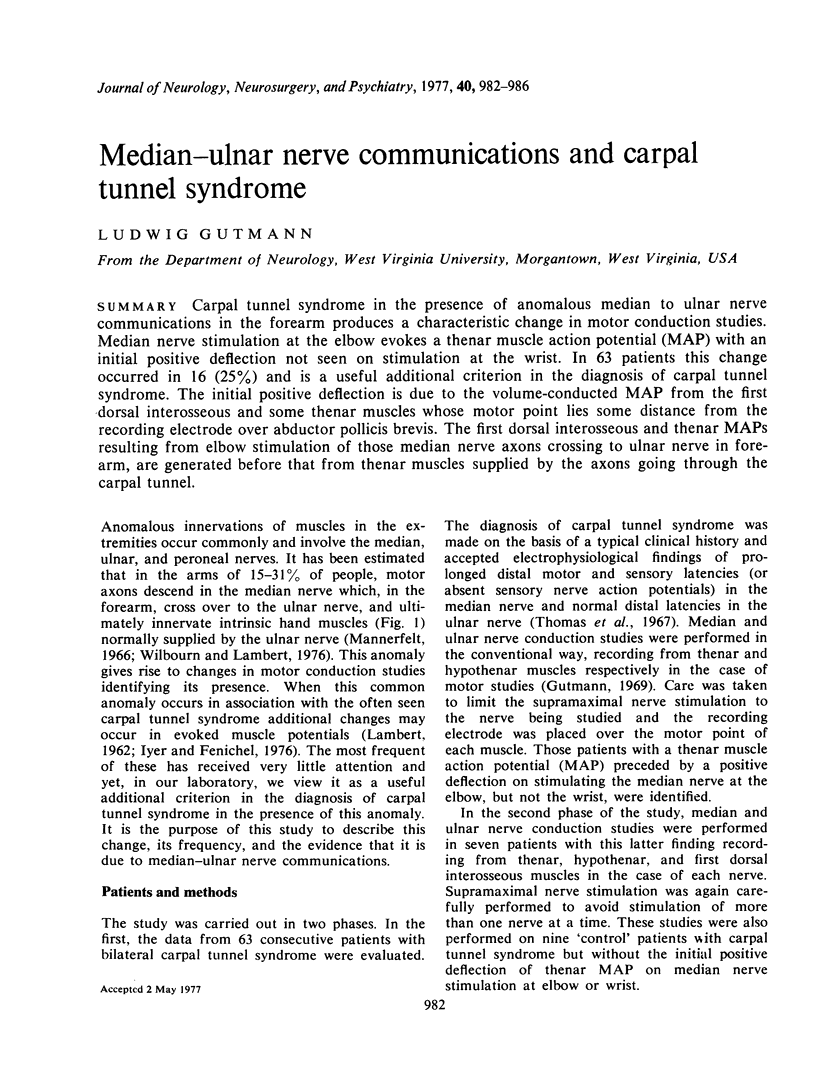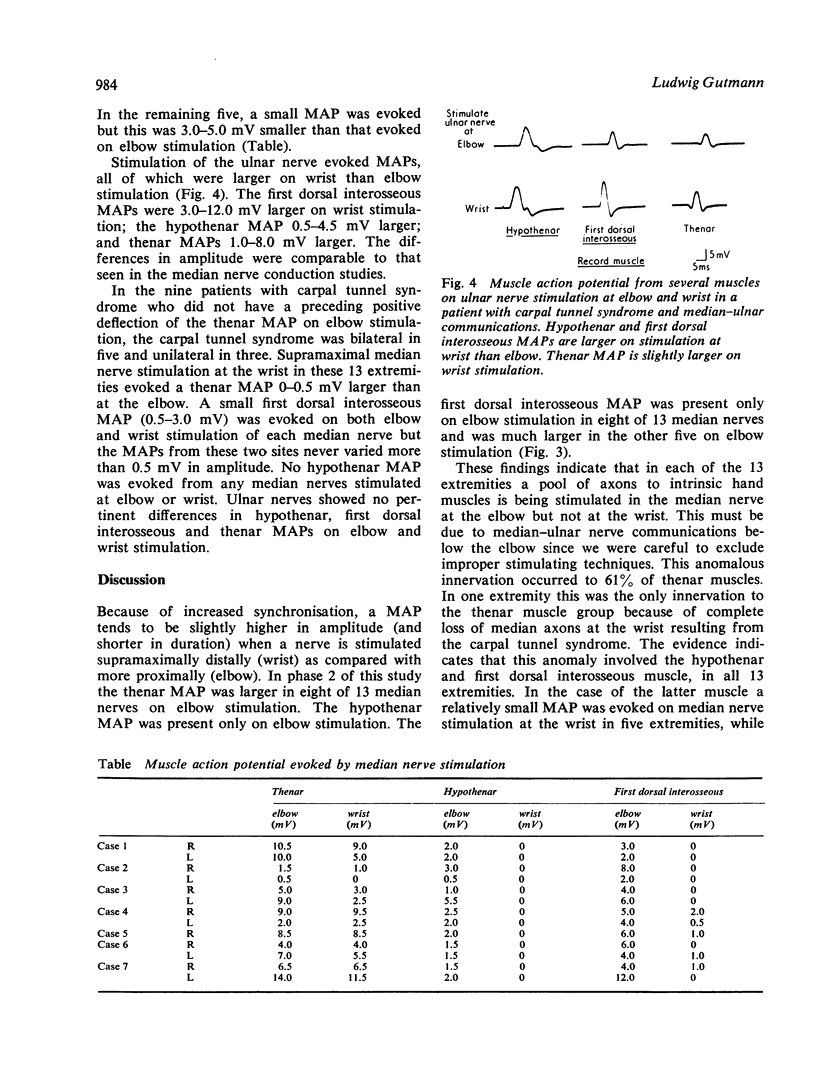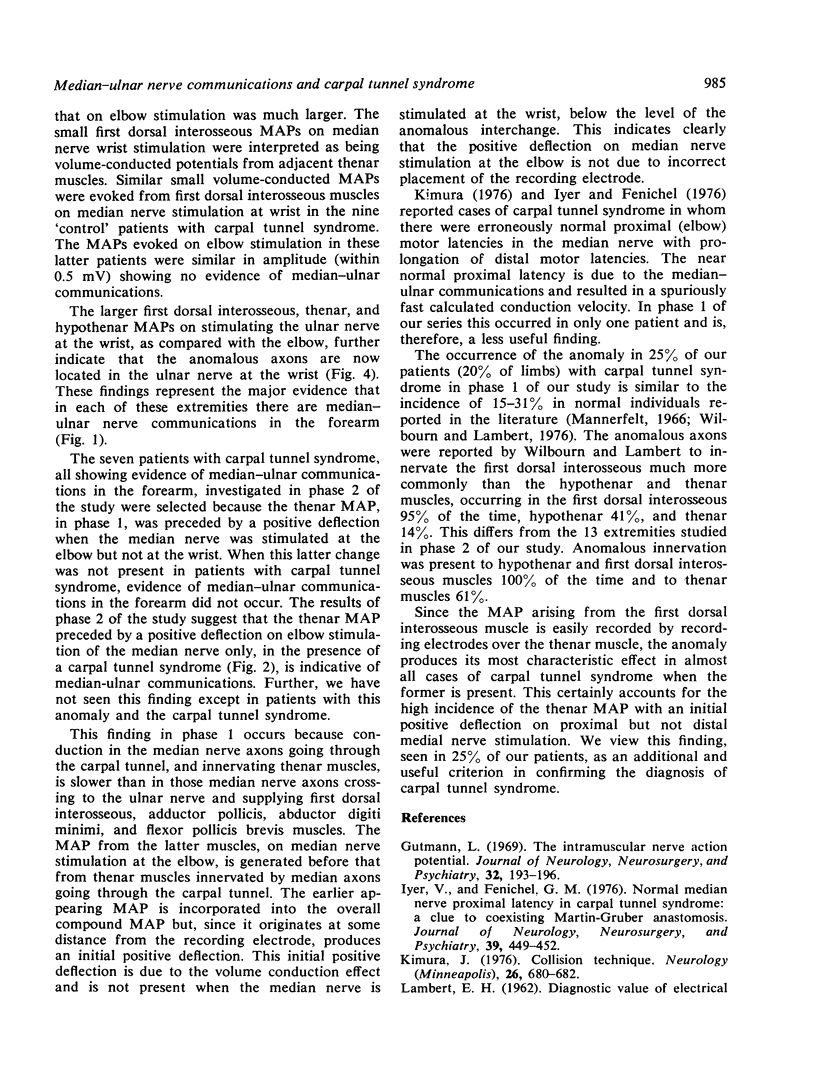Abstract
Carpal tunnel syndrome in the presence of anomalous median to ulnar nerve communications in the forearm produces a characteristic change in motor conduction studies. Median nerve stimulation at the elbow evokes a thenar muscle action potential (MAP) with an initial positive deflection not seen on stimulation at the wrist. In 63 patients this change occurred in 16 (25%) and is a useful additional criterion in the diagnosis of carpal tunnel syndrome. The initial positive deflection is due to the volume-conducted MAP from the first dorsal interosseous and some thenar muscles whose motor point lies some distance from the recording electrode over abductor pollicis brevis. The first dorsal interosseous and thenar MAPs resulting from elbow stimulation of those median nerve axons crossing to ulnar nerve in forearm, are generated before that from thenar muscles supplied by the axons going through the carpal tunnel.
Full text
PDF




Selected References
These references are in PubMed. This may not be the complete list of references from this article.
- Iyer V., Fenichel G. M. Normal median nerve proximal latency in carpal tunnel syndrome: a clue to coexisting Martin-Gruber anastomosis. J Neurol Neurosurg Psychiatry. 1976 May;39(5):449–452. doi: 10.1136/jnnp.39.5.449. [DOI] [PMC free article] [PubMed] [Google Scholar]
- Kimura J. Collision technique. Physiologic block of nerve impulses in studies of motor nerve conduction velocity. Neurology. 1976 Jul;26(7):680–682. doi: 10.1212/wnl.26.7.680. [DOI] [PubMed] [Google Scholar]


